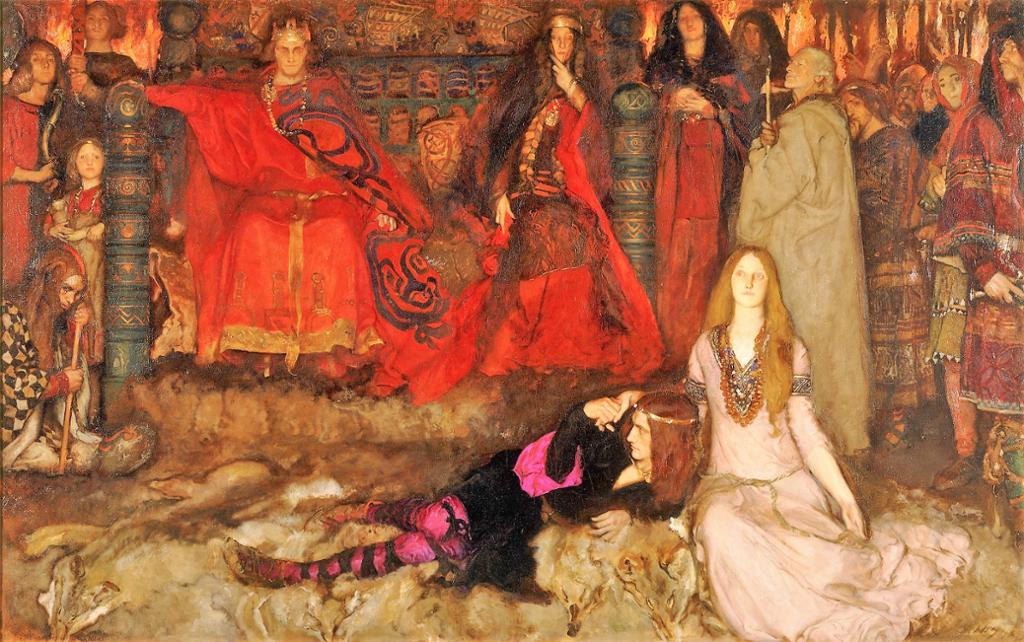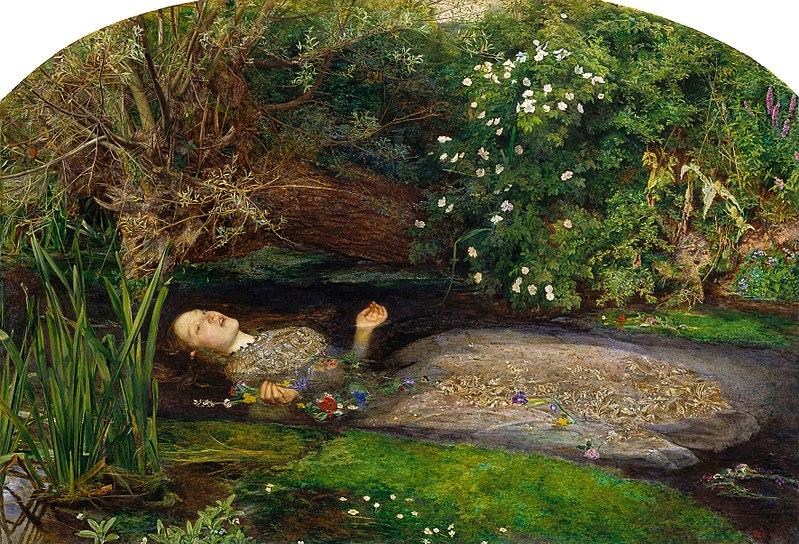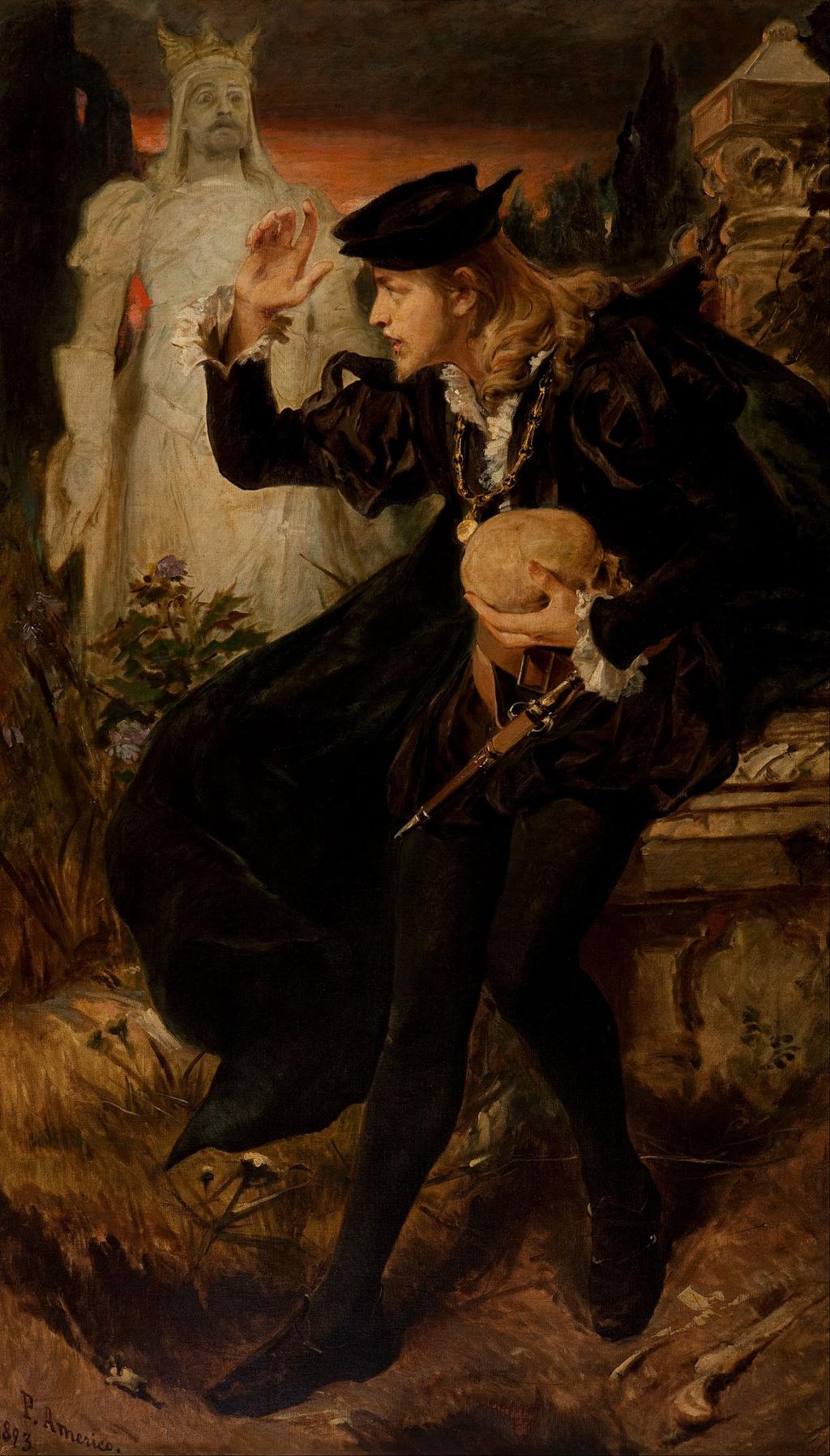Tasks: 'To Be or Not to Be' by William Shakespeare
Remember that this is a 400-year-old text, and the language is fairly difficult. In order to fully grasp what Hamlet is talking about, you have to be patient: study the language carefully and read the text several times.
Work in pairs or small groups.
Take turns and read the soliloquy aloud. Don’t worry if you don’t understand every word in the text. Try to listen to Hamlet’s descriptions. What do you think he's talking about? What is your first impression of the mood of the text?
To make it easier for you, we have divided the soliloquy into passages using line shifts. Focus on one passage at the time and try to paraphrase the text into modern English. Use as simple language as possible while preserving the meaning that you find in the text. Use the glossary that is provided for you and the internet for additional help. Compare your answers in class.
When you understand the meaning of the soliloquy, read the text aloud again. Are there any words that are difficult to pronounce? Are you able to read it with flow and in a natural rhythm? Practise a few times.
Take a closer look at the language Shakespeare is using.
Find examples of uncommon word order and words that we no longer use. Make sure you understand their meaning.
Can you find any examples of literary devices, imagery, and blank verse? What does Shakespeare achieve by using these devices? How does the language enhance the message of the soliloquy?
In this soliloquy, Hamlet explores the option of whether death would offer a peaceful alternative to the stresses of life. What is the point of living?, he asks.
Try to trace Hamlet’s arguments throughout the soliloquy. What different answers to this question does he explore, and what are his options? What is he afraid of? What excuses does he have? What resolution does he come to?
How would you describe the view on life and death that we find in this soliloquy?
Why do you think Shakespeare chose to express Hamlet's thoughts in a soliloquy and not in a conversation with his friend Horatio? What does a soliloquy like this show us about Hamlet that a scene with other characters would not have revealed?
Based on this speech, how would you describe the character of Hamlet? What does the speech reveal about him? Do you see any positive or negative traits?
What do you remember from the text and tasks?
William Shakespeare knew how to craft the perfect insult. He had an insult for every occasion, and they were often creative and very cutting.
Here are a few examples:
"Away, you starvelling, you elf-skin, you dried neat’s-tongue, bull’s-pizzle, you stock-fish!" (Henry IV)
"I do desire we may be better strangers". (As you like it)
"An ass-head and a coxcomb and a knave, a thin faced knave, a gull". (Twelfth Night)
Work in pairs.
Feel the secret joy of creating your own juicy Shakespearean insults. Put some bitterness in the way you say it, add a nice scowl and maybe some evil eyes. (If you had had a sword, you would also point that at your partner.)
Combine one word from each of the three columns below, and preface your insult with the word 'thou'. For example:
Thou loggerheaded, dismal-dreaming maggot-pie.
Have fun, and remember to shake hands afterwards....
Below, you can see two examples of paintings that were inspired by the play Hamlet. Study the paintings and discuss the questions with a partner.
Which painting do you like the most. Why?
Which painting provides the most information about the play?
If you were going to create a work of art inspired by Hamlet, what would it look like?
If you would like to read more of Hamlet, you will find the entire play on Project Gutenberg.
Link to Project Gutenberg: Hamlet by William Shakespeare
Relatert innhold
Learn more about Hamlet and the greatest soliloquy in world literature.


